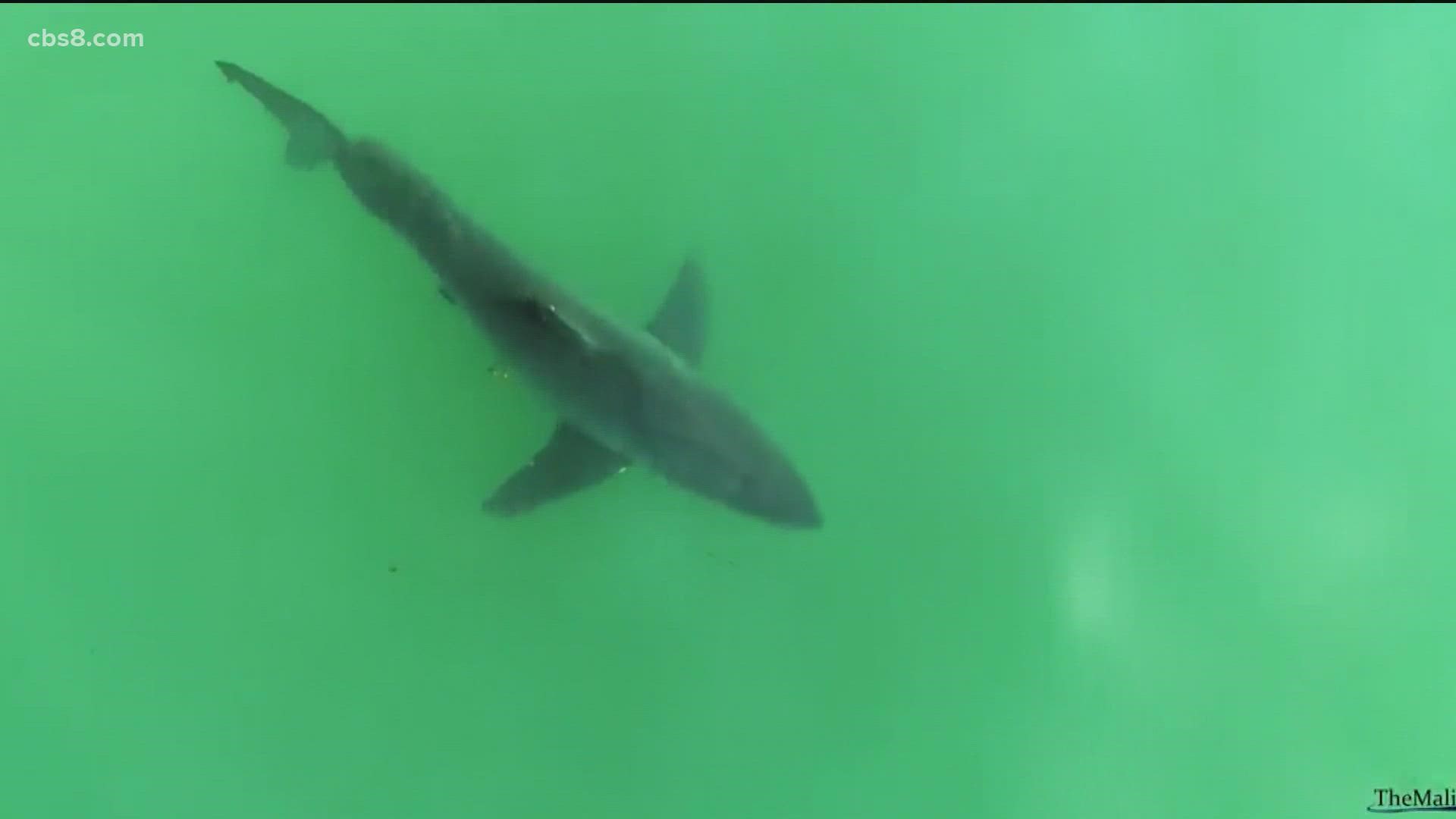CORONADO, Calif. — Two new buoys off the coast of Coronado will now instantly alert lifeguards of tagged sharks nearby, helping lifeguards keep the coast safe and serving as a valuable research tool to study shark behavior.
While shark attacks are incredibly rare in the region, these buoys can serve more as an educational tool for lifeguards and researchers as opposed to an early detection system. The two buoys were installed by the CSU Long Beach Shark Lab, under the direction of Dr. Chris Lowe.
"What we wanted to know was how long are these sharks spending by beaches, what are they doing while they're there, how long are they going to be there, and what the cities want to know is when are they going to leave," said Lowe.
Prior to these buoys going into use, data was collected but often took several weeks for divers to collect the data and distribute it.
“Lifeguards are going, ‘that’s too slow. We need to know if there’s a shark off our beach today,’" Lowe told CBS 8.
The team at the Shark Lab worked with the manufacturer to develop a buoy with cell service that could instantly alert lifeguards and researchers if a tagged shark was detected nearby.
"Instead of waiting for a diver to pick it out, now anytime a tagged shark is within 300 yards of one of those buoys it will send them a text alert telling them what shark was just detected, how long has it been there, and where has that shark been over the last few months," said Lowe.
While the pings can let lifeguards know if a shark is nearby, Coronado Lifeguard Captain Sean Carey says it’s not necessarily a reason for his team to panic.
“If we were going to take action anytime there was a shark detection, we would literally be doing that all day if there were sharks aggregating here," said Carey.
That’s because while the new data shows sharks can linger around busy beaches, it’s usually juvenile sharks, using the warm shallow water as a nursery with plenty of stingrays to feed on – and largely unconcerned with humans.
"What we're learning is that for many of these juvenile sharks, they ignore people. They're in and amongst them every single day," said Dr. Lowe. "They don't care. Humans are just flotsam."
The buoys can then have a dual purpose: monitoring migration patterns like traveling south during the winter, but they can also alert lifeguards if there is a large adult shark that may pose a threat. The Shark Lab is also studying the economic impacts of beach closures – for instance, how much money is lost in a community that closes the beach versus keeping it open.
“Ten years ago, if somebody saw a white shark off the beach, they would close the beach," said Lowe. "Now we're learning, 'do you really need to do that?' This new data is changing the way things are done because we're learning more about behavior of these animals. In that, it's showing many of these animals really aren’t posing a threat to the public.”
The buoys off the coast of Coronado can only detect sharks that are already tagged, and the CSU Long Beach Shark Lab is constantly adding to that list by tagging more and more sharks. They hope the data helps people understand how sharks live amongst us, their migratory patterns, and hopefully keeps people safe and comfortable as they head out into the water.
Watch Related: Fascination with great white sharks leads to cage dive for drone hobbyist (Aug 23, 2021)

